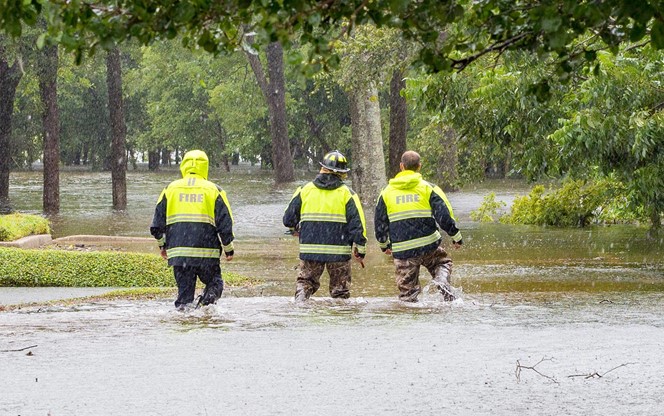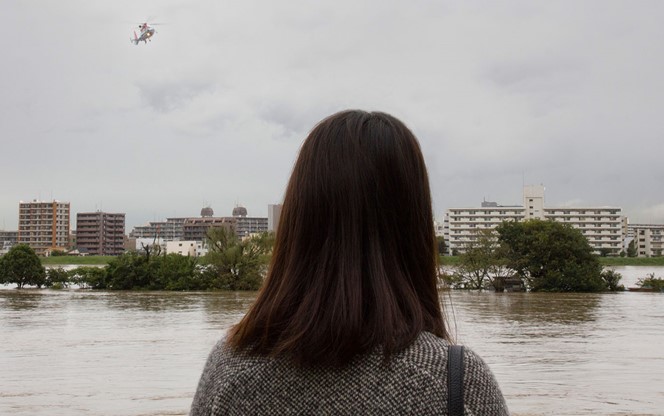

Flooding can happen anywhere. Consequently, every organization is at risk.
While most flood insurance claims come from what the National Flood Insurance Program calls Special Flood Hazard Areas, which have a high risk of flooding, more than 40 percent of claims in recent years have come from areas that have a moderate-to-low risk of flooding.
In fact, 99 percent of all U.S. counties experienced a flood event between 1996 and 2019, according to the Federal Emergency Management Agency (FEMA).

Share this page
Regardless of where your property is located, it’s important to ensure your organization has the right flood coverage in place.
This article looks at flood risk and discusses how to assess whether your organization has sufficient coverage to provide protection if your building(s) and the contents are damaged in a flood.
Hurricanes and tropical storms can lead to coastal flooding. Although the 2022 hurricane season was average, with 14 named storms, three of them — Hurricanes Fiona, Ian and Nicole — caused extensive damage in Florida and Puerto Rico.
Heavy rains can also trigger flash flooding and levee or dam breaks. In 2022, St. Louis, eastern Kentucky, southern Illinois, Death Valley and Dallas-Fort Worth all experienced “thousand-year rain” that led to flooding.
Another source of floods is spring thaw from melting snow. That phenomenon and heavy rain contributed to the massive 2022 flood in Yellowstone National Park.
There’s also a higher risk of flash flooding and mudflows in the aftermath of wildfires.
Despite a decline in the total number disaster events associated with flooding, in January 2023, floods in California caused significant damage. Moody’s RMS® estimates the losses could total $5–7 billion.
It’s important to keep in mind that a flood doesn’t have to be severe to have a major impact. Just a few inches of floodwater can cause tens of thousands of dollars in damage, according to FEMA.
A 2021 report from the nonprofit First Street Foundation and global engineering firm Arup, “The 4th National Risk Assessment: Climbing Commercial Closures,” looked at the risk of flood damage to 3.6 million retail, office and multi-unit residential properties across the U.S. A key finding was U.S. businesses could face $16.9 billion in structural damage by 2052, as illustrated below. That would be an increase of roughly 25 percent over 2022 estimated flood-related spending.

Source: First Street Foundation, “The 4th National Risk Assessment: Climbing Commercial Closures” (December 13, 2021). Reprinted with permission.
The National Oceanic and Atmospheric Administration (NOAA) publishes long-range flood risk estimates for three-month periods. NOAA is expected to issue its forecast for the 2023 Atlantic Hurricane season in May.
According to a 2022 article published in Nature Climate Change, flood risk is expected to rise in many counties over the coming decades, as shown in the map below.
Source: Wing, O.E.J., Lehman, W., Bates, P.D. et al. Inequitable patterns of U.S. flood risk in the Anthropocene. Nat. Clim. Chang. 12, 156–162 (2022). https://www.nature.com/articles/s41558-021-01265-6#citeas
It’s a good idea to review your commercial insurance coverages to verify if you are adequately protected in the event of a flood.
Commercial insurance coverages do not always include flood protection. Even if they do, in geographic areas that have a high flood risk, it may be prudent to purchase a stand-alone flood policy. If you have a mortgage, the lender can require flood insurance depending on your flood zone.
Segal offers a complimentary policy review to assess the appropriateness of your current property and casualty coverage and flood coverage.
As part of our review, we will:
As a leading broker for plan sponsors for decades, we have the experience to give you insights into coverage gaps and options for closing them.

Insurance, Multiemployer Plans, Corporate

Insurance

Insurance
This page is for informational purposes only and does not constitute legal, tax or investment advice. You are encouraged to discuss the issues raised here with your legal, tax and other advisors before determining how the issues apply to your specific situations.
© 2024 by The Segal Group, Inc.Terms & Conditions Privacy Policy California Residents Sitemap Disclosure of Compensation Required Notices
We use cookies to collect information about how you use segalco.com.
We use this information to make the website work as well as possible and improve our offering to you.